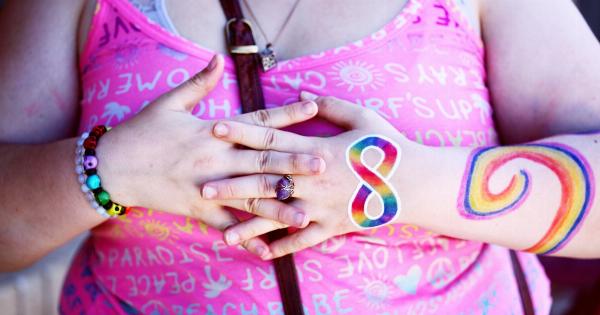Autism and same-sex attraction are two complex and unique aspects of human identity. While they may seem unrelated at first, research has shown interesting correlations between the two.
In this article, we will explore the possible connections between autism and same-sex attraction and shed light on the experiences of individuals who navigate both of these aspects of their lives.
Defining Autism and Same-Sex Attraction
Autism, also known as Autism Spectrum Disorder (ASD), is a neurodevelopmental disorder that affects social interaction, communication, and behavior.
It is characterized by a range of challenges in these areas and is often accompanied by repetitive patterns of behavior or interests.
On the other hand, same-sex attraction, also referred to as homosexuality or being gay/lesbian, relates to an individual’s romantic, emotional, or sexual attraction to individuals of the same sex.
Same-sex attraction is a natural variation of human sexual orientation.
Autism and Gender Identity
Research suggests that individuals with autism may have a higher likelihood of identifying as LGBTQ+ compared to the general population. While the reasons for this correlation are not yet fully understood, various theories have been proposed.
One theory suggests that the social and communication challenges faced by individuals with autism may influence their understanding and expression of gender.
Autism is known to affect social interactions, making it more difficult for individuals to conform to socially constructed gender norms. This lack of conformity may contribute to a higher likelihood of non-heterosexual orientations.
It is essential to note that autism is a heterogeneous disorder, and experiences may vary widely among individuals. Therefore, not all individuals with autism will necessarily identify as LGBTQ+, and vice versa.
Sensory Sensitivities and Atypical Sexual Orientations
Another potential link between autism and same-sex attraction may be sensory sensitivities.
Studies have noted that individuals with autism often experience sensory sensitivities, such as heightened responses to sensory stimuli or difficulties with sensory integration.
These sensory differences can influence an individual’s experiences of sexuality and sexual attraction.
Some individuals with autism may report sensations and preferences that differ from the general population, including preferences for certain sensory experiences related to their sexual orientation.
However, it is crucial to approach this topic with sensitivity and respect, as experiences of sensory sensitivities and sexual orientation can be highly individual and subjective.
Challenges Faced by Individuals with Autism and Same-Sex Attraction
Being part of two marginalized communities, individuals who identify as both autistic and LGBTQ+ may face unique challenges and discrimination.
They might encounter societal misconceptions, stigmatization, and limited understanding of their experiences.
For example, individuals with autism may struggle with understanding or expressing their sexual orientation due to difficulties with social cues and norms.
This can lead to feelings of confusion, isolation, and additional challenges in forming relationships and seeking support.
Furthermore, the limited availability of resources specifically tailored to the intersection of autism and LGBTQ+ identities can further exacerbate the challenges faced by these individuals.
Acknowledging and Supporting Intersectional Identities
Efforts towards inclusivity and understanding should encompass diverse intersections of identity, including autism and LGBTQ+ experiences.
It is important to validate and affirm the identities of individuals who identify as both autistic and LGBTQ+. Creating safe spaces that consider and appreciate their unique perspectives can help foster a sense of belonging and acceptance.
Educating healthcare professionals, support networks, and communities is crucial in addressing the specific needs of this intersectional population.
By offering tailored resources, support groups, and inclusive mental health services, we can better support the well-being and self-acceptance of individuals who navigate autism and same-sex attraction.
The Importance of Allyship and Advocacy
Allyship is an essential component in promoting acceptance and inclusivity. Allies can help challenge stereotypes, reduce prejudice, and advocate for equal rights and opportunities for individuals who identify as both autistic and LGBTQ+.
Advocacy efforts should aim to create inclusive policies, legislation, and educational initiatives that cater to the needs of diverse communities, including those with intersecting identities.
Conclusion
The intersection of autism and same-sex attraction is a complex and understudied area. While research has provided insights into possible connections, further studies are necessary to fully understand the complexities of these diverse experiences.
By embracing diversity, fostering inclusivity, and advocating for the rights of all individuals, we can create a society that celebrates and acknowledges the many unique ways in which people identify and navigate their lives.






























